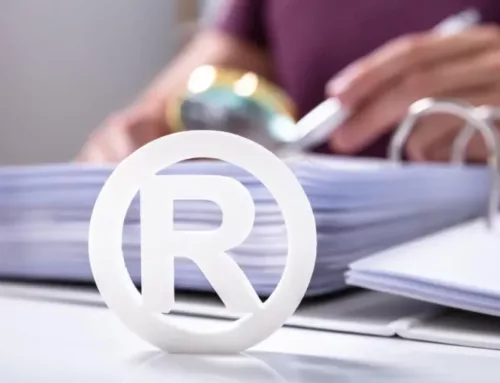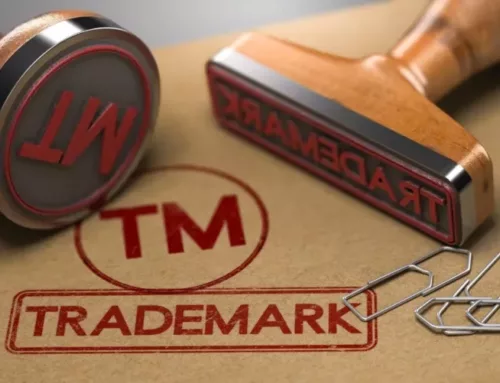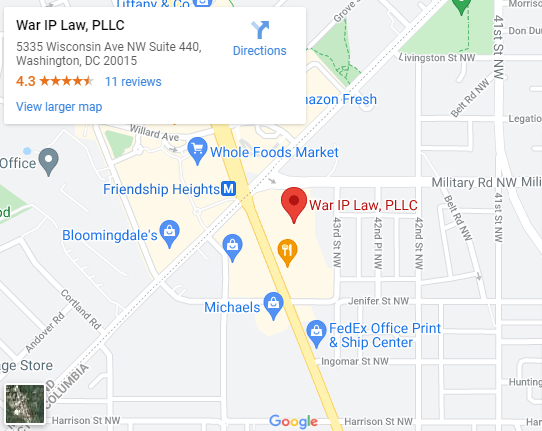When you register your trademark, you likely do so to protect it against infringement. When others use your registered trademark without your permission, this is infringement. In some cases, infringement can lead to trademark litigation as the trademark owner seeks compensation for damages they have suffered as a result of the infringing activity. The ways in which a potential infringer can violate your intellectual property rights go beyond simply putting your trademark on their products. If your trademark is being infringed upon, or you have been accused of trademark infringement yourself, the experienced Washington, D.C. trademark attorneys with War IP Law PLLC may be able to assist you. Call (202) 800-3754 to schedule a free 30-minute consultation.
What Is an Example of a Trademark Lawsuit?
There are hundreds, if not thousands, of trademark lawsuits filed in the United States each year. Often the parties involved in these intellectual property lawsuits are smaller brands that you may never hear about because they lack national notoriety and neither their day to day operations nor their litigation are picked up as noteworthy by news outlets. However, one rather unique trademark litigation case is the Academy Awards vs. GoDaddy.
In this case, the Academy Awards accused GoDaddy of letting people purchase confusingly similar domain names, such as 2015Oscars.com, and used 57 different domain names as evidence. The Academy Awards claimed that GoDaddy was allowing these purchasers to profit by buying and “parking” those domain names (cybersquatting) so they could collect revenue. The judge in this case ruled that GoDaddy did not possess the bad faith intent to profit that is required and therefore, GoDaddy was not doing anything wrong. While GoDaddy won that case, if the Academy Awards had filed against the people who purchased the domains instead –– seeking damages from the alleged cybersquatters rather than the domain registrar –– that might have made “bad faith” easier to prove, but at the cost of pursuing compensation from parties that might have been less able than GoDaddy to pay if damages had been awarded.
What Are the Causes of Action for Trademark Infringement?
To file trademark litigation, one must have a cause of action for trademark infringement. In other words, there must be a reason to file a lawsuit. There are five causes of action, or forms of infringement, that a trademark owner may claim to file a trademark claim.
Unfair Competition
Unfair competition is likely the form of trademark infringement that most people think of. This is the most obvious and easily identified form of infringement. Unfair competition is likely to happen when the accused infringer adopts a trademark or name that is the same as, or confusingly similar to, the owner’s trademark.
To prove unfair competition in trademark lawsuits, the trademark owner must show that they own the trademark rights in the mark or name they are suing about and that the other party adopted either the same mark, or one so similar to their own that it would likely confuse consumers. Note that evidence of actually confusing consumers is not necessary, only the likelihood.
Trademark Dilution
Trademark dilution may occur when the accused infringer’s commercial use of a famous trademark allows them to profit from its distinctiveness. A mark is considered famous if it is widely recognized by American consumers. Famous marks might include Pepsi cola, Dove body wash, or Crest toothpaste. To prove dilution, the trademark owner must prove their trademark is famous, that the accused infringer used the mark commercially and in commerce after it became famous, and that the accused infringer’s use likely caused dilution.
While the trademark owner may claim their mark is famous, the court will consider additional factors in determining whether the mark is famous, including but not limited to:
- Whether the mark is registered
- The extent to which the mark is recognized
- The geographic extent, volume, and amount of goods and services sold under the mark
- The geographic reach, extent, and duration of the mark’s publicity and advertising
False Advertising
When claiming false advertising as a form of trademark infringement, the claim is not so much that another party is infringing on the trademark owner’s trademark. Instead, a false advertising claim claims that the trademark owner is falsely advertising something in connection with their own trademark. For example, Dannon brand yogurt once filed a false advertising claim against General Mills because General Mills claimed their Yoplait yogurt contained live and active cultures, when some Yoplait products did not contain them.
The idea behind such a claim is that the plaintiff in this kind of trademark litigation may have lost customers who opted to purchase the competition because of these false claims. However, to file this kind of claim, the plaintiff must prove:
- The opposing party’s advertisements were false or misleading
- The advertisements did deceive, or could have deceived, consumers
- The alleged deception materially affected consumers’ purchasing decisions
- The product or service being misrepresented impacts interstate commerce
- The plaintiff has been, or is likely to be, injured due to the false advertisements
Trade Dress
Legally, a trademark and trade dress are the same thing. Trade dress is a form of trademark. However, it is a very specific form that applies to such things as the packaging or labeling of a product, design of a product, flavor or color of a product. For trade dress to be protected by trademark laws, it must be distinctive and nonfunctional. If it is a functional part of the product, it cannot be trademarked because the functional nature means that any competing product will necessarily require that same function to be created. No one can trademark the way a burrito is folded because, in order to make a burrito, the tortilla must be folded.
If the alleged infringer uses features of a trademark owner’s trade dress that are non-functional in nature, the trade dress is inherently distinctive and has a secondary meaning, and this use causes or is demonstrably likely to cause confusion for consumers, a trademark owner may be able to file a trade dress lawsuit. If you have questions about trade dress infringement, War IP Law PLLC may be able to answer them.
Cybersquatting
If an individual is registering, trafficking in, or using a domain name in bad faith that is identical or confusingly similar to a distinctive trademark, this may be cybersquatting. Consider the example of the Academy Awards vs. GoDaddy. If an individual registered the website 2024Oscars.com in 2023, knowing that people would search for the 2024 Oscars and come across that site, and the individual furthermore demonstrated an intent to make money from this use, the Academy Awards might be able to sue them for cybersquatting as a form of trademark infringement.
The intention to make a profit from such use of the domain name might be shown in a variety of ways. Examples include selling inferior or counterfeit products to consumers who would otherwise have purchased from the trademark owner, or it could also be by attempting to sell the domain name to the trademark owner at a significant markup when the domain owner did not use and had no intention of using the domain name other than to sell it to the trademark owner for a profit.
How Does Trademark Infringement Harm Your Brand?
While it is generally agreed that trademark infringement harms a brand, it is not always clear exactly how it can do so. The following are a few of the ways that trademark infringement could harm a brand:
- Diluting the brand and creating consumer confusion: The unauthorized use of a trademark can erode the trust and loyalty customers have for the brand if they receive inferior goods. The brand’s distinctiveness and recognition may also be compromised.
- Creating negative perceptions and associations: If the alleged infringer sells inferior products or services, customers may begin to associate those items with the brand and tarnish the reputation with negative reviews, complaints, and referring others to the brand’s competitors.
- Losing business opportunities: If the alleged infringer benefits from the brand’s goodwill without authorization, this can create business opportunities for them instead of the brand itself. In other words, potential customers may be diverted from the brand, costing the brand money.
- Damaging relationships and causing legal consequences: The brand may need to spend substantial time and money on legal disputes. The time spent on these legal disputes may place strain on other business relationships. Additionally, the brand’s reputation may be damaged due to an apparent lack of control over the trademark.
- Eroding the brand’s identity: Trademark infringement erodes a brand’s unique identity, damaging the brand’s reputation. The more damage done to their reputation, the harder it can become to regain trust.
How Can You Enforce Your Trademark Rights?
The United States Patent and Trademark Office (USPTO) makes clear that when someone registers a trademark, that individual or entity is responsible for enforcing their trademark rights. This may sound easy enough, but there are several things that a trademark owner may need to do in order to enforce their trademark rights.
Monitor for Potential Infringement
The USPTO does not monitor for potential infringement. They will reject a registration application for being too similar to an existing registered trademark or suspend an application if an earlier pending application is awaiting approval or rejection. Once a trademark is registered, however, the owner is responsible for monitoring for potential infringement in the marketplace. There are several ways this can be done, including:
- Setting up a Google alert for the trademark
- Searching social media, mobile applications, and the internet
- Searching USPTO’s Trademark Electronic Search System (TESS) database
- Setting up a Watch Notice for the USPTO official gazette to look for potentially infringing trademarks before they are officially registered
- Engaging a service to use a variety of methods to monitor the trademark on the owner’s behalf
File Opposition or Cancellation Proceedings
One of the final stages of the trademark registration process is the USPTO publication of potential trademarks in their official gazette for 30 days. During this time, existing trademark owners can file an opposition to the registration of a published trademark if they believe it infringes on their existing intellectual property rights.
If an owner misses the window and a trademark is registered that they believe infringes on their own, they can file to cancel the other trademark’s registration. They may also be able to seek the cancellation of a trademark if it has been abandoned, or if they can prove an earlier first use date for their own trademark.
Register With Appropriate Authorities
Registering a trademark with the USPTO is an excellent step toward protecting a trademark. For businesses hoping to register a trademark with United States Customs and Border Protection (CBP), the USPTO trademark registration is required. CBP recognizes three levels of infringement:
- Counterfeit marks
- Copying or simulating marks
- Restricted gray marketing goods (parallel imports)
Registering a trademark with CBP allows CBP to help enforce the trademark rights by taking actions such as:
- Detaining the goods
- Seizing the products
- Forfeiting the items
- Destroying the materials
CBP registration may also be available for copyrights that are registered with the United States Copyright Office (USCO), so businesses that maintain multiple types of intellectual property may wish to explore the benefits of copyright registration further.
Send Cease and Desist Letters to Potential Infringers
When an individual or business discovers trademark infringement, often they may not want to immediately begin the potentially costly and time-consuming process of trademark litigation. In such cases, the trademark owner may begin by sending a cease and desist letter to the alleged infringer. A cease and desist letter, in the context of trademark disputes, essentially tells the party receiving the letter that the sender believes they are infringing on the sender’s trademark. Typically, the letter also issues a warning to stop the infringing behavior or the sender will take legal action; the letter will often specify the legal action to be taken, and may name a date by which a response is expected.
File Trademark Litigation
In cases where a cease and desist letter is not effective, or in which the alleged infringement is of a scale and execution to foreclose the probability of an innocent misunderstanding that can be amicably repaired, trademark owners often do resort to trademark litigation. In these instances, trademark owners will file a lawsuit against the alleged infringer and ask a judge to determine whether there is infringement and, if the judge finds that the trademark owner’s intellectual property rights have been violated, to order the infringer to stop the behavior. Frequently the plaintiff in these cases will also ask the judge to order the infringing party to pay damages to compensate for the harm that was or may have been done to the brand’s image and reputation.
Do You Have Other Questions About Trademark Litigation?
Trademarks and trademark infringement can pose a number of complex practical as well as legal questions. The time and expense involved in trademark litigation mean that you will want to build as strong a case as possible, whether you are enforcing your own rights or defending against a claim that you have infringed on another’s rights. If you have questions regarding trademark lawsuits, infringement, or enforcing your intellectual property rights, the knowledgeable Washington, D.C. intellectual property attorneys with War IP Law PLLC may be able to answer them. Call (202) 800-3754 to schedule a consultation.






